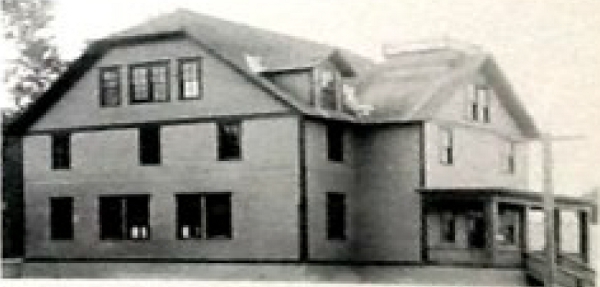Boundary County celebrates 98th birthday
 |
| Boundary County's original courthouse, formerly a school and a hotel, housed county government from 1915 through 1940. |
|
|
| By Jack Flinn |
Two days later, Alexander Graham Bell placed the first coast-to-coast telephone call from New York City, ringing up trusted assistant Thomas Watson in San Francisco. The big war in Europe was just months old, and President Woodrow Wilson was promising to keep the U.S. out of it.
Like the state itself, Boundary County was years in the making.
When Idaho Territory was created by Congress July 4, 1863, split off from the part of Oregon Territory not included when Oregon became a state in 1859, it included all of Montana and most of Wyoming.
Montana gained statehood in 1889; what is now Idaho became a state July 4, 1890, and Montana became a state six days later on July 10.
Kootenai County, Idaho, comprising most of the Idaho Panhandle, was formed in 1864. In 1907, it was split in two with the formation of Bonner County, which ran clear to the Canadian border.
On January 23, 1915, both Bonner and Kootenai Counties were split again, forming both Boundary and Benewah Counties.
According to Betty Douglas, the wood-frame building that became the first Boundary County Courthouse was located just east of the present-day courthouse. It had originally been built as a school, but was remodeled in 1907 into the West Hotel. The three-story building was again remodeled to become the original County Courthouse in 1915.
Stella Stoos Bangs, was the first county stenographer, and she would spend the rest of her life working in various offices for the county, passing away January 4, 1984, just a few days before the county turned 69 years old.
In the mid-1930s, in the midst of the Great Depression, a Bonners Ferry newspaper man, Charlie King, who owned and operated the Bonners Ferry Herald at the time, was given much of the credit for spurring the construction of a new county courthouse, the one now located at 6452 Kootenai Street.
A 60-percent super majority of votes was needed to pass a $50,000 bond to build a new courthouse; when put to voters, 70-percent said yes, and county commissioners hired the firm of White and Price, Spokane. The county applied to have the structure built as a project of Franklin D. Roosevelt's Works Project Administration, which would provide the labor for construction.
Because of the regularly flooding Kootenai River, the architects recommended the building be built of concrete, to be built on a cement slab. Ground tests showed good silt going down 15-feet, allowing the 15-inch steel reinforced slab, with an integral five-foot wall all around the building, to be poured without the support of pilings.
Clifford Hill, superintendent of construction, oversaw the $365,000 project through dedication in 1938.
After the old courthouse was torn down in 1940, a big hole was excavated in the yard, and with great fanfare the heavy cement vaults of the old building were tipped in and buried.
It turned out that the advice White and Price gave was good. In 1948, the Kootenai again overflowed its banks and floodwaters rose eight feet up the sides of the courthouse. Offices were moved upstairs, business went on as usual and the Boundary County Courthouse came through undamaged.